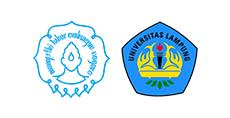The Effectiveness Of The Flipped Classroom Type Blended Learning Model In Basic Graphic Design Subjects at Vocational High School
Abstract
Full Text:
PDFReferences
[1] R. Prayogi, U. Suryatna, and A. A. Kusumadinata, “Hubungan Komunikasi Pembelajaran Sistem E-Learning Dengan Motivasi Belajar Siswa (Kasus Pada Smk Wikrama Kota Bogor),” J. Komun., vol. 1, no. 2, pp. 99–113, 2017.
[2] G.Sri and Sumiati, Pembelajaran Daring di Tengah Pandemi COVID-19. 2020.
[3] R. F. N. ’ Mah, “Model Pembelajaran Langsung Untuk Mengambilan Keputusan Siswa Sekolah Dasar,” vol. 2006, pp. 2–4, 2006.
[4] A. J. Noor, “KEMAMPUAN PEMECAHAN MASALAH MATEMATIKA SISWA DALAM,” vol. 2, pp. 250–259, 2014.
[5] A. Marisya and E. Sukma, “Konsep Model Discovery Learning pada Pembelajaran Tematik Terpadu di Sekolah Dasar Menurut Pandangan Para Ahli,” J. Pendidik. Tambusa, vol. 4, no. 3, p. 2191, 2020.
[6] F. Yulietri, Mulyoto, and L. A. S, “Model Flipped Classroom dan Discovery Learning Pengaruhnya terhadap Prestasi Belajar Matematika ditinjau dari Kemandirian Belajar,” J. Teknodika, vol. 13, no. 2, pp. 5–17, 2015.
[7] W. A. Estika and Ekohariadi, “Pengembangan Blended Learning dengan Strategi Flipped Classroom pada Mata Pelajaran Desain Multimedia di SMK PGRI Ploso,” It-Edu, vol. 2, no. 02, pp. 141–148, 2017.
[8] M. Kurniawati, H. Santanapurba, and E. Kusumawati, “Penerapan Blended Learning Menggunakan Model Flipped Classroom Berbantuan Google Classroom Dalam Pembelajaran Matematika Smp,” EDU-MAT J. Pendidik. Mat., vol. 7, no. 1, pp. 8–19, 2019.
[9] J. Nouri, “The flipped classroom: for active, effective and increased learning – especially for low achievers,” Int. J. Educ. Technol. High. Educ., vol. 13, no. 1, 2016.
[10] S. Arikunto, Prosedur Penelitian Suatu Pendekatan Praktik Ed Revisi, Rineka Cip. Jakarta, 2010.
[11] P. M. Abdullah, Living in the world that is fit for habitation : CCI’s ecumenical and religious relationships. 2015.
[12] Sugiyono, Metode penelitian pendidikan: Pendekatan kuantitatif, kualitatif, dan R&D, Alfabeta. Bandung, 2007.
Refbacks
- There are currently no refbacks.






